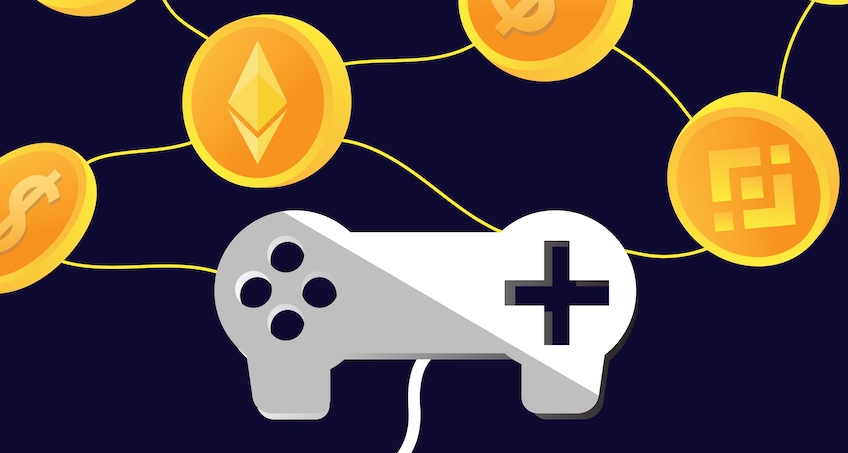
GameFi is a new concept in the gaming and blockchain businesses.
Traditional video game players who are familiar to paying to play an online game are drawn to blockchain video games where they might instead be compensated for their time and work.
What is GameFi?
The term GameFi is inspired by the term DeFi and stands for Game Finance.
GameFi refers to financial transactions in the crypto world that are based on games.
The term Play-to-Earn (P2E) is used outside of GameFi and may be considered synonymous with GameFi. Yet, P2E and GameFi do not have the same connotation.
While P2E refers to earning money by playing video games, GameFi encompasses much more. GameFi not only the system of making money by playing games, but also financial transactions and systems on gaming platforms.
To explain GameFi more clearly, there are staking, yield farming, etc. that exist in DeFi processes. We can say that it is the integration of financial transactions and NFTs into the gaming industry.
GameFi, in its most popular meaning, refers to decentralized apps (dApps) with monetary incentives. These are often tokens awarded as prizes for completing game-related activities like as winning battles, mining valuable materials, or cultivating digital crops.
It is critical to understand that GameFi is not a gambling site. To earn cash, the games to be part of this developing industry need players to use a combination of skill and strategy. Although chance plays a role in these games, it is not the most important element in determining who wins or is eligible for monetary compensation.
How do GameFi games work?
In these games, all objects are represented as NFT. Consider land plots, avatars, outfits, weapons, and gold bars. Once a player finds and accumulates these goods via gaming, they may trade them with others in digital markets for different NFTs or sell them for cryptocurrencies.
Depending on the game, players can boost their earning potential by spending time leveling up and upgrading their characters, building monetized structures on their property that other gamers pay to use, or competing in tournaments.
All NFTs and cryptocurrency transaction data are maintained on a public blockchain to keep track of what each participant possesses.
Today, GameFi comes in a variety of flavors. As a result, the ways via which gamers might gain cash from their games differ. There are, however, a few key elements worth addressing. To monetise the activity, many of today’s most popular blockchain games use a mix of the following characteristics.
- Play-to-earn: Players in certain blockchain games are rewarded financially for accomplishing gaming objectives. The monies rewarded in these games are often derived from a reserve of native tokens kept within a smart contract.
- Asset ownership: The notion of ownership of limited digital assets is central to many blockchain games today. Digital ownership of one-of-a-kind assets opens up previously unimaginable business potential. Owners can monetize their digital assets in the same manner that they may market their physical assets.
Bottomline
The GameFi concept outperforms existing online games.
As blockchain and NFT games hint to what is to come, the play-to-earn mechanism will eventually be the passport to widespread crypto adoption. So it is hardly surprising that this exponential trend shows no indications of abating.
If current trends continue, GameFi and NFTs will serve as a rallying point for DeFi.
Prospects for this new business are infinite, thanks to rising public interest and an injection of finance.
